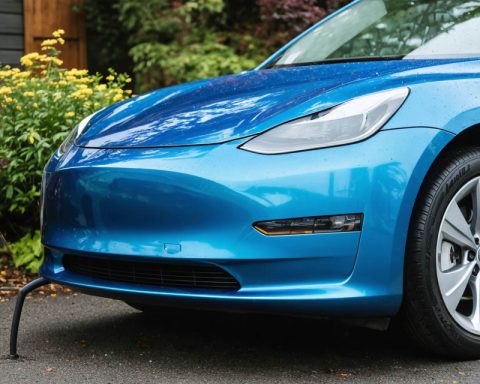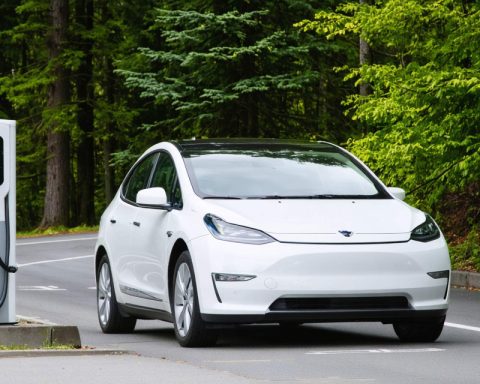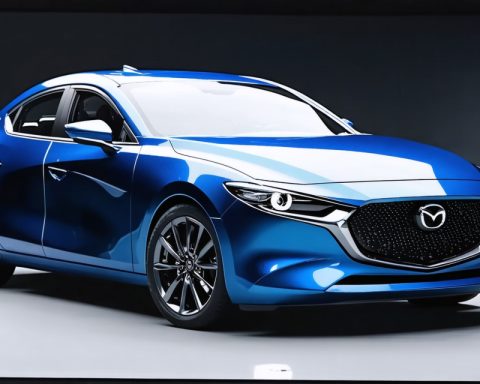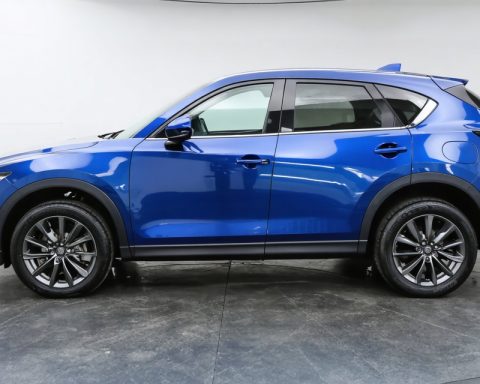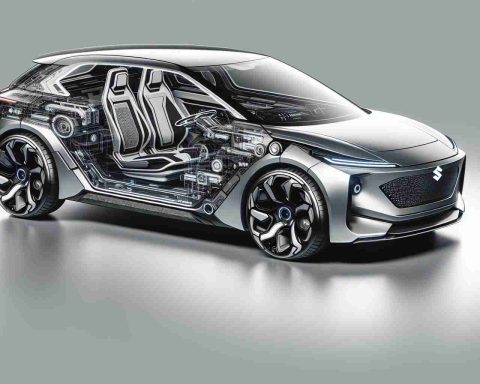- The automotive world in 2025 is centered on affordable electric vehicle innovations, with Tesla’s anticipated $25,000 “Model 2” leading the charge.
- The SGMW Wuling Hongguang’s cost-effective pricing and impressive extended-range electric vehicle (EREV) variant position it as a key player in the EV space.
- The industry faces a plateau in fully-electric offerings, turning to hybrids and EREVs as the new frontier.
- Tesla may leverage international collaboration, importing affordable batteries from China, assembling in India, and finalizing products in the U.S., potentially pricing the Model 2 at $24,999.
- An enticing “Freedom Fund Fun Bucks” rebate could accompany the Model 2, although full self-driving features remain absent.
- The design of the prospective Model 2 combines elements reminiscent of Tesla’s past models, promising both innovation and practicality.
- With Tesla’s entry into the affordable EV sector, the promise of a thrilling, cost-effective vehicle could redefine the market.
Picture this: the year is 2025, and while your eggs still cost $9 in Chicago, the automotive world is caught in a compelling tug of war. Once heralded at Tesla’s grandiose Battery Day in 2020, the $25,000 Tesla “Model 2” looms like an electric whisper on the horizon—could it finally come to life with a little help from an unlikely friend across the Pacific?
Enter the SGMW Wuling Hongguang, the unassuming hero of the Chinese electric vehicle scene. It boasts a practical five or seven-seat configuration, an impressive 300 km range (a healthy 185 miles), and a juicy $9,600 price tag that sparks dreams of economic commuting. Yet the spotlight shines brightest on its extended-range electric vehicle (EREV) variant, one that promises a jaw-dropping 1000 km swath of freedom, luring any ambitious automaker.
The streets are buzzing with a cold truth: the electric craze of yesteryears, once littered with promises of fully-electric lineups, has hit a sobering plateau. With Toyota steadfast in its hybrid dominance, and the US adrift in battery supply challenges, plug-in hybrids and EREVs become the touchstone of progress.
Imagine Tesla, riding this dynamic, orchestrating a dance where it buys Wuling’s cost-effective 8.5 kWh battery from China, ships it to India for assembly, and lands it in Houston’s arms ready for its final American tweak—a modest gas motor, basic interiors, and maybe a star-spangled sticker or two.
Pricing this beauty at $24,999, Tesla teases the electric dream within reach again, complemented by none other than a cheeky “Freedom Fund Fun Bucks” rebate for the politically savvy buyer. The catch? No full self-driving glory—yet an affordable Optimus robot chauffeur could soon join the ride, making it the smartest set of wheels on your street by nightfall.
If the Wuling’s silhouette whispers familiarity, you’re likely not mistaken; sketch it between a first-gen Model Y and a Kia Rondo and see Tesla’s school of design affirming itself once more. It wouldn’t be their first rodeo with repurposing—after all, the Tesla Roadster did start life as a Lotus Elise.
This prospective Model 2 may offer more than just affordability; it promises a thrilling drive, pairing rear-wheel delight with its 1.5L range extender. The nimble 75 kW electric motor and that robust 8.5 kWh battery pack push Tesla’s vision forward, built on a legacy of innovation that never quite stays still.
The prospect is deliciously surreal, yet entirely possible. A move of such magnitude could spark a renaissance in affordable EV mobility, leaving the competition wistfully reimagining their own strategies. As the curtains rise on this model’s hypothetical debut, we’re left pondering: could this be the automotive catalyst that draws the future even closer?
Your thoughts could just shape this narrative—join the conversation below and make your mark on what could become Tesla’s next great leap!
Could the $25,000 Tesla Model 2 Redefine Affordable Electric Mobility?
The automotive world is witnessing a major shift, as electric vehicles transition from high-end luxury to everyday essentials. At the center of this conversation is the much-anticipated $25,000 Tesla Model 2, hinted at during Tesla’s Battery Day in 2020. This potential game-changer could find its footing with the help of an unexpected ally: the SGMW Wuling Hongguang.
Wuling Hongguang: The Chinese Contender
Wuling Hongguang has become a significant player in the electric vehicle market, especially in China. Here’s why:
– Affordable Pricing: Priced at approximately $9,600, it offers a budget-friendly option for EV enthusiasts.
– Impressive Range: The vehicle claims a basic range of 300 km (about 185 miles) with its electric configuration. The EREV variant purportedly delivers up to 1000 km, tantalizing range-conscious consumers.
– Flexible Configuration: Available in five or seven-seat arrangements, it adapts to both personal and family use.
With these features, Wuling Hongguang sets a benchmark for cost-effective electric vehicles.
Tesla Model 2: Aligning with Future Trends
While the industry strives to overcome challenges like battery supply and manufacturing constraints, the Model 2 might just be the innovation needed:
– Global Supply Chain Strategy: Tesla might source Wuling’s 8.5 kWh batteries from China, assemble parts in India, and finalize vehicles in the U.S. This strategy not only reduces costs but enhances global production efficiency.
– Pricing Strategy: Expected to be introduced at a price of $24,999, the Model 2 would make EVs accessible to a wider audience.
– Hybrid Appeal: With a modest gas motor and a 75 kW electric motor, it leverages the hybrid trend, appealing to traditional and environmentally-conscious drivers alike.
Addressing Market Realities and Trends
Hybrids vs. Fully Electric: As fully-electric models face supply and cost challenges, hybrids like EREVs steal the limelight by offering longer ranges without anxiety—particularly crucial for markets lagging in EV infrastructure.
Industry Trends:
– Global Collaborations: Partnerships across borders such as Tesla potentially working with Chinese and Indian counterparts signal a shift towards more inclusive, globalized production models.
– Affordability: As EV technology becomes more mainstream, companies focus on creating affordable yet efficient vehicles to attract cost-conscious consumers.
Challenges and Considerations
While the Model 2 could redefine affordable EVs, it faces challenges:
– Battery Supply Constraints: Securing a steady battery supply chain is crucial.
– Competitive Market: Tesla must stay ahead of the fierce competition from both established automakers and emerging startups.
Actionable Steps for Interested Buyers
If you’re considering an entry into the electric vehicle market, here are some tips:
1. Stay Informed: Follow developments on Tesla’s Model 2 and similar affordable EV offerings.
2. Incentives & Rebates: Investigate potential tax incentives or rebates in your region—programs like “Freedom Fund Fun Bucks” could make EVs even more affordable.
3. Consider Hybrid Options: Evaluate the benefits of hybrid models or EREVs, especially if you’re concerned about range limitations.
For more information about Tesla and its electric vehicle lineup, visit Tesla.
In conclusion, the Model 2 has the potential to shift the automotive paradigm, making electric vehicles accessible to millions more. Whether through clever collaboration, pricing strategies, or sheer innovation, this could indeed be Tesla’s next great leap forward. Join the conversation and add your voice to this pivotal moment in automotive history.

